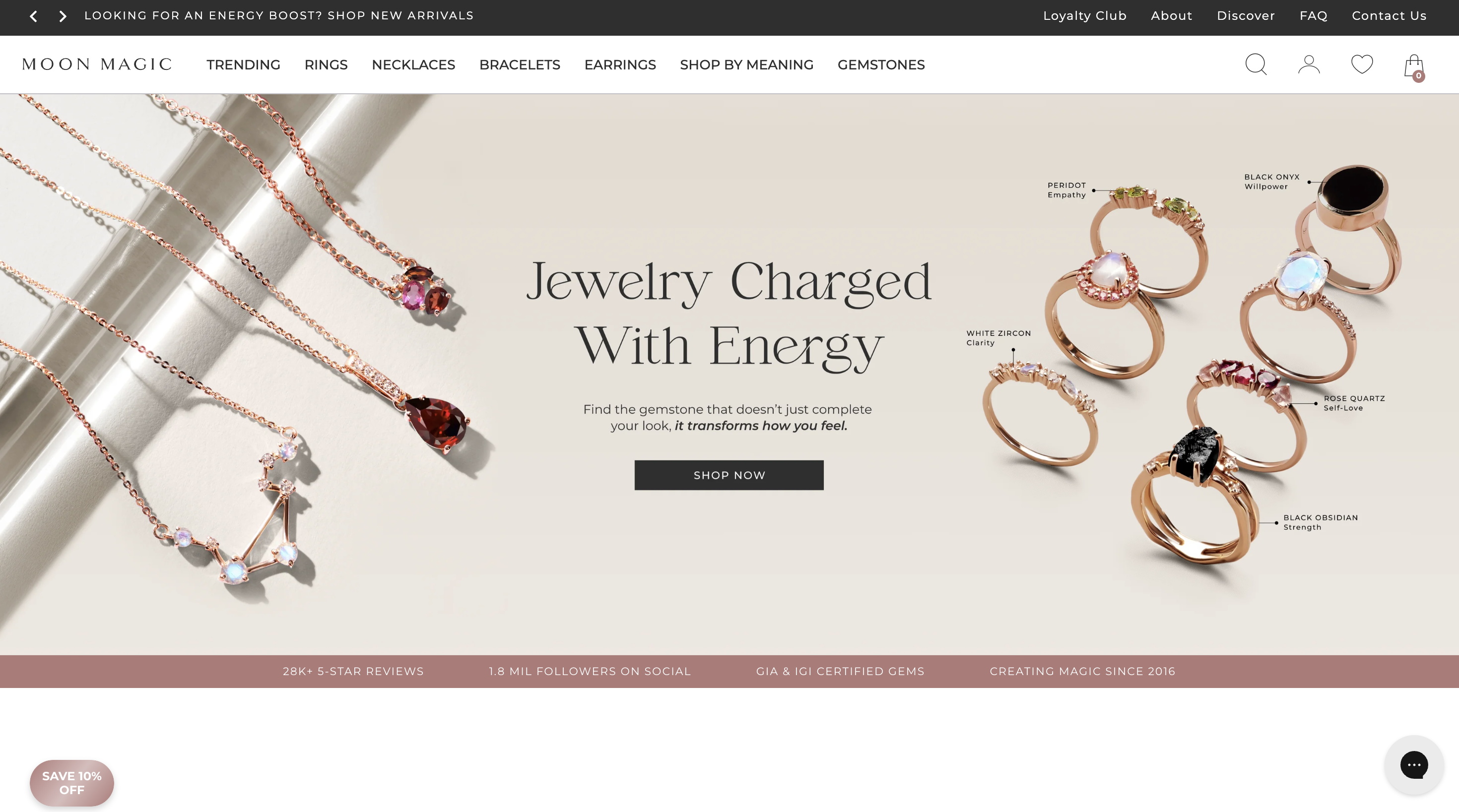Key Takeaway
By introducing a personalized cross-sell carousel in the shopping cart, Moonmagic.com increased average revenue per user by 9%, driven by a 4% increase in conversion rate and a 10% increase in average order value.
Client Overview
Moonmagic.com is a fast-growing direct-to-consumer jewelry brand offering rings, necklaces, earrings, and other accessories. With over 430,000 monthly sessions (according to Similarweb), the brand relies heavily on digital performance marketing to drive traffic and sales.

Opportunity Background
Analysis showed that 25% of shoppers were already buying multiple items per transaction, suggesting a strong opportunity to increase order value through cross-selling. Heuristic UX analysis identified unused space in the shopping cart, creating an ideal placement for a cross-sell carousel. To support this, we evaluated the platform's two built-in recommendation engines using a regression model and found that users who interacted with one of them converted 3.6 times more than average.

Solution
We introduced a cross-sell carousel directly inside the shopping cart, populated with complementary product recommendations from the site's top-performing recommendation engine. The goal was to encourage multi-item purchases without interrupting the user's intent to check out.
To validate the impact, an A/B test was conducted with a 50/50 traffic split, targeting only users who added an item to the cart and viewed it. This ensured clean, intent-driven data and reduced noise from non-engaged users.
Results
The newly implemented solution led to a 9% increase in average revenue per user, supported by a 4% increase in conversion rate and a 10% increase in average order value. Users exposed to the carousel not only added more items, but were also more likely to complete the purchase.